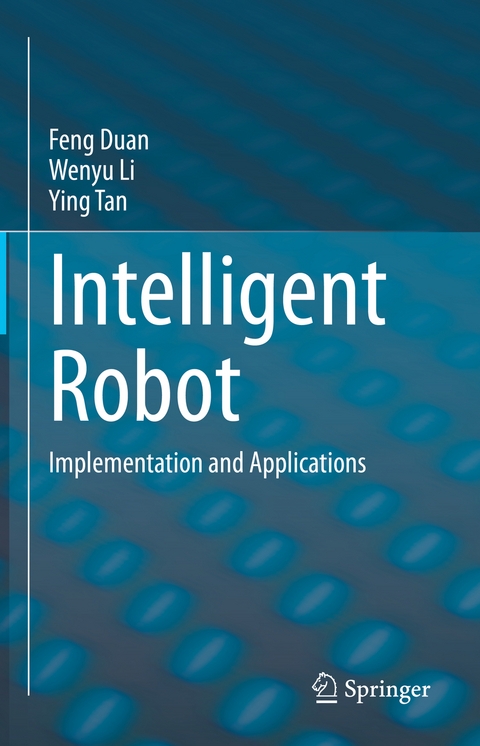
Intelligent Robot
Springer Verlag, Singapore
978-981-19-8252-1 (ISBN)
Feng Duan received his BE and ME degrees in mechanical engineering from Tianjin University, China, in 2002 and 2004, and his MS and PhD degrees in precision engineering from the University of Tokyo, Japan, in 2006 and 2009, respectively. He is a recipient of the FANUC FA Robot Foundation Best Paper Award (2011) and the Award of the Japanese Society for Artificial Intelligence (2014), and won of the RoboCup Japan Open (Standard Platform League 2015, @Home Simulation 2016 and @Home Education 2017). Currently, he is a professor at Nankai University, P.R. China, whose research interests include cellular manufacturing systems, rehabilitation robots, and brain-machine interfaces. Wenyu Li received the B.S. degree from the College of Information Technology and Science, and the Ph.D. degree from the College of Artificial Intelligence, Nankai University, in 2013 and 2019, respectively. He used to be a Visiting Ph.D. Scholar at the CAID Laboratory, University of Georgia, USA, in 2018, and engaged as a Post-Doctoral Researcher with the School of Vehicle and Mobility, Tsinghua University, China, from 2019 to 2021. He is currently an Assistant Professor at the College of Artificial Intelligence, Nankai University. His current research interests include human-vehicle cooperative control, non-zero sum differential game theory, and reinforcement learning. Ying Tan received her BE degrees in intelligent science and technology from Nankai University, China, in 2020. She won the third place in RoboCup Japan Open 2019 @Home Education. Currently, she is a doctoral student at Nankai University, and her research interests include brain-computer interface and human-robot interaction.
Chapter 1 Introduction to Robots.- Chapter 2 Getting Started with ROS.- Chapter 3 The framework of ROS.- Chapter 4 Programming with ROS.- Chapter 5 Introduction to Turtlebot Robot .- Chapter 6 Robot Vision: Theory and Implementation.- Chapter 7 Advanced Robot Vision.- Chapter 8 Robot Autonomous Navigation: Theory and Implementation.- Chapter 9 Robot Speech: Theory and Implementation.- Chapter 10 Robotic Hands, Grasping and Manipulation.- Chapter 11 Case 1: Long command recognition and multi-task execution.- Chapter 12 Case 2: Follow and assist the user.- Chapter 13 Case 3: Restaurant scenario: wave hand to order food.
“The book is an effective tutorial for using ROS. So embark on reading it if you intend to adopt ROS, either by delivering your software or for using available software on your robot.” (G. Gini, Computing Reviews, July 17, 2023)
| Erscheinungsdatum | 24.02.2023 |
|---|---|
| Zusatzinfo | 1 Illustrations, black and white; XII, 290 p. 1 illus. |
| Verlagsort | Singapore |
| Sprache | englisch |
| Maße | 155 x 235 mm |
| Themenwelt | Informatik ► Theorie / Studium ► Künstliche Intelligenz / Robotik |
| Technik ► Elektrotechnik / Energietechnik | |
| Schlagworte | Artificial Intelligence • Automation • Control • Robotics • service robot |
| ISBN-10 | 981-19-8252-X / 981198252X |
| ISBN-13 | 978-981-19-8252-1 / 9789811982521 |
| Zustand | Neuware |
| Informationen gemäß Produktsicherheitsverordnung (GPSR) | |
| Haben Sie eine Frage zum Produkt? |
aus dem Bereich


